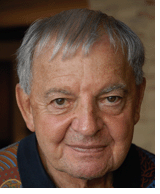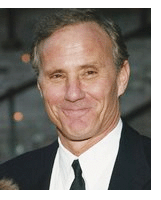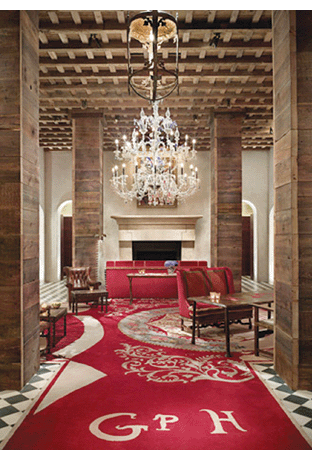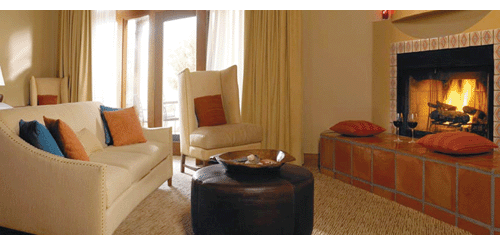 Tourism trends tracker Tourism trends tracker
Bernard Burt changed his lifestyle after covering fitness fads in the 1980s for American Health Magazine.
SpaGoer Bernard Burt
An authoritative, independent observer of the spa industry for nearly two decades, Bernard Burt was founding director of ISPA in 1991. He foresaw industry growth, staging annual conferences and co-chairing the first international summit meeting of industry leaders in Baden-Baden, Germany, a landmark event in 1996 covered by USA Today. His services to the industry were honored with presentation of the International Spa Association's Dedicated Contributor Award in 2000.
Documenting destinations worldwide, Burt co-authored "100 Best Spas of the World" with Pamela Price. Published by The Globe Pequot Press in 2000, Third edition of the book was recently published. Previously he created and wrote "Fodor's Healthy Escapes," a North American guide to spas, health resorts, and spiritual retreats, published in 1986 by Random House.
 For continuing coverage, see his Web site, www.SpaGoer.com. For continuing coverage, see his Web site, www.SpaGoer.com.
Bernard Burt is the senior editor of SPA MANAGEMENT JOURNAL
E-Mail: biburt@aol.com


DRIVING SPA
DESIGN

(or Lack Of...)
by Bernard Burt
At the 2008 Global Spa Summit, hotel developer Ian Schrager gave a very inspirational talk. Looking somewhat "hip" at the age of 61, Schrager said it’s time for spa designers to create hip new experiences:
“ The spa industry needs a lot more creativity...we have started recyclying the same old ideas over and over and we are not coming up with anything new. “
Looking at other spas for inspiration for new spa  design is a bad idea in Schrager’s book. design is a bad idea in Schrager’s book.
Rather look outside of the spa industry, he advised. See what is happening in fashion, maybe in yacht design, or hip restaurants.
”Don't rely on focus groups or asking others for ideas when it comes to innovation...people cannot articulate something they haven't seen.
Rather, rely on your gut - something you want to see that is brand new.”
 Schrager hotels like The Delano on Miami Beach, and the Grammercy Park (pictured here) in Manhattan are noted more for décor than spas. “Creativity in decor has nothing to do with the color of the carpet,” he said. “It has everything to do with a new idea that sparks enthusiasm and catches on.” Schrager hotels like The Delano on Miami Beach, and the Grammercy Park (pictured here) in Manhattan are noted more for décor than spas. “Creativity in decor has nothing to do with the color of the carpet,” he said. “It has everything to do with a new idea that sparks enthusiasm and catches on.”
Much of Ian Schrager’s "secret" was how he tapped into people's natural (and strong) desire to relate to each other, commented Susie Ellis in her blog about the event for Spa Finder. Bottom line: Social space is where "nuggets" of creativity will likely lie for spas of the future.
Schrager’s collaboration with Marriott’s new boutique hotel brand will incorporate his design concepts in the rooms of about 100 hotels. "I am still passionate about continuing to rethink things and shake things up,” he said.
CLODAGH DOES DESERT LOOK FOR MIRAVAL
This past June, Miraval Resort and Spa outside Tucson unveiled a collection of new guest rooms by Clodagh Design (right). Working in collaboration with Mithun Architects of Seattle, the new guest rooms are constructed using traditional desert techniques of rammed earth and adobe brick. Each room affords spectacular views of the Catalina Mountains and a private garden for showering under the stars. For more information online, contact www.miravalresorts.com.
In honor of Clodagh’s 25th anniversary of designing in New York, Interior Design Magazine’s September issue featured a range of designs from Clodagh’s fashion days all the way to the more recently completed Equinox Health club in Manhattan. For information on Clodagh’s book and all publicity-related inquiries, please contact Chardonnay Pickard, Public Relations Director, via email at cpickard@clodagh.com or by phone at 212-542-5069.
SWISS TO HOST SPA SUMMIT
Opened in 1865, one of Switzerland’s spectacular spa hotels is the Victoria-Jungfrau Grand Hotel in Interlaken, host for the 2009 Spa Summit this May. With large indoor swimming pool and sauna complex, the hotel is linked to a spa wing designed and operated by ESPA, plus Clarins salon. The combination is both surprising and refreshing, and set a new standard for Swiss spas when opened in 2003.

The main pool & heat experience area covers 1400 square metres and offers the following facilities:
• 62 feet (20-metre) swimming pool (29°C / 82°F)
• 2 interior whirlpools (34°C / 93°F)
• open-air saltwater Jacuzzi (36°C / 97°F)
• steam room/Turkish bath (air temperature 45°C / 113°F)
• Finnish sauna (men and women mixed, air temperature 90°C / 194°F)
• 2 bio saunas (men/women separate, air temperature 55°C / 131°F)
• 2 solaria (Ergoline Open Sun 450 and Ergoline Classic 700)
• Gymnasium with exercise equiment and scheduled classes
Spa guests cross a glass bridge to enter the reception area, which sports a café serving breakfast and lunch. Conceived by the hotel’s former directors, Rosmarie and Emmanuel Berger, the spa wing includes 10 bedrooms designed for contemporary comfort. Glass walls offer dramatic views of the Jungfrau mountain as well as the resort town.
Like a hotel within a hotel, these exclusive rooms allow you to relax in a spa robe and walk downstairs for treatment. There are 16 private rooms for treatments, plus co-ed sauna, but the piece-de-resistance is a Zen-like private suite. The ESPA menu ranges from standard facials and bodywork to ayurveda.
With a dynamic new director, Hans-Rudolf Rütti, this landmark hotel crowns the new Victoria-Jungfrau Collection, including historic four-star hotels in Zurich, Bern, and Lucerne. Capitalizing on marketing synergies, and membership in The Leading Hotels of the World, the V-J Collection ended 2008 with record profits.
Having featured the Victoria-Jungfrau Grand Hotel & Spa in my book “100 Best Spas of the World.” I returned last spring to meet the new management team. Commenting on how the spa has affected the hotel’s bottom line, Dr. Rütti offered some data:
Burt: Can you define how the spa has helped the hotel become more profitable? Has data been kept on spending by spa guests?
Rütti: “Yes, we were able to increase the rate by 3.5 % on average and we even achieved a REVPAR premium of 5 % on average since the opening of the ESPA, meaning over the past 17 years.”
“Despite the fact that the capture rate of hotel guests remains on a fairly low level of approx. 10 to 12 %, we are convinced that the option of having an appropriate spa infrastructure on site facilitates the buying decision of our customers significantly.”
Burt: At the 2008 Summit, there was much discussion about benchmarking. Hoteliers need a basis for costs versus revenue from spa.
Rütti: “We do benchmark within Europe and have only started to establish a benchmark group in Switzerland in order to have a better understanding of the market drivers and obstacles. However, we realise that lots of efforts are needed to convert all data into a comparable format in order to evaluate apples with apples.”
A bastion of luxury and good taste, the Victoria-Jungfrau Grand Hotel is leading the way for a new generation of Swiss hoteliers and spa directors. Contact: www.victoria-jungfrau-collection.ch
DOCUMENTING SPECTACULAR SPAS
As we began a new year, my research on a book took shape. The focus will be on design and how spas create unique experiences. Titled “Spectacular Spas,” there will be three regional books in this new series: Asia/Pacific, Europe, and The Americas. With support from the Asia Spa Institute based in Singapore, our criteria for selection of spas to be featured have been circulated throughout the region. Response so far is positive and enthusiastic. Publication of the Asia/Pacific regional book is scheduled for early next year.
Nominations are still open: www.SpectacularSpasAsia.com
© Spa Management Journal

|
 Tourism trends tracker
Tourism trends tracker For continuing coverage, see his Web site, www.SpaGoer.com.
For continuing coverage, see his Web site, www.SpaGoer.com.

 design is a bad idea in Schrager’s book.
design is a bad idea in Schrager’s book. Schrager hotels like The Delano on Miami Beach, and the Grammercy Park (pictured here) in Manhattan are noted more for décor than spas. “Creativity in decor has nothing to do with the color of the carpet,” he said. “It has everything to do with a new idea that sparks enthusiasm and catches on.”
Schrager hotels like The Delano on Miami Beach, and the Grammercy Park (pictured here) in Manhattan are noted more for décor than spas. “Creativity in decor has nothing to do with the color of the carpet,” he said. “It has everything to do with a new idea that sparks enthusiasm and catches on.”